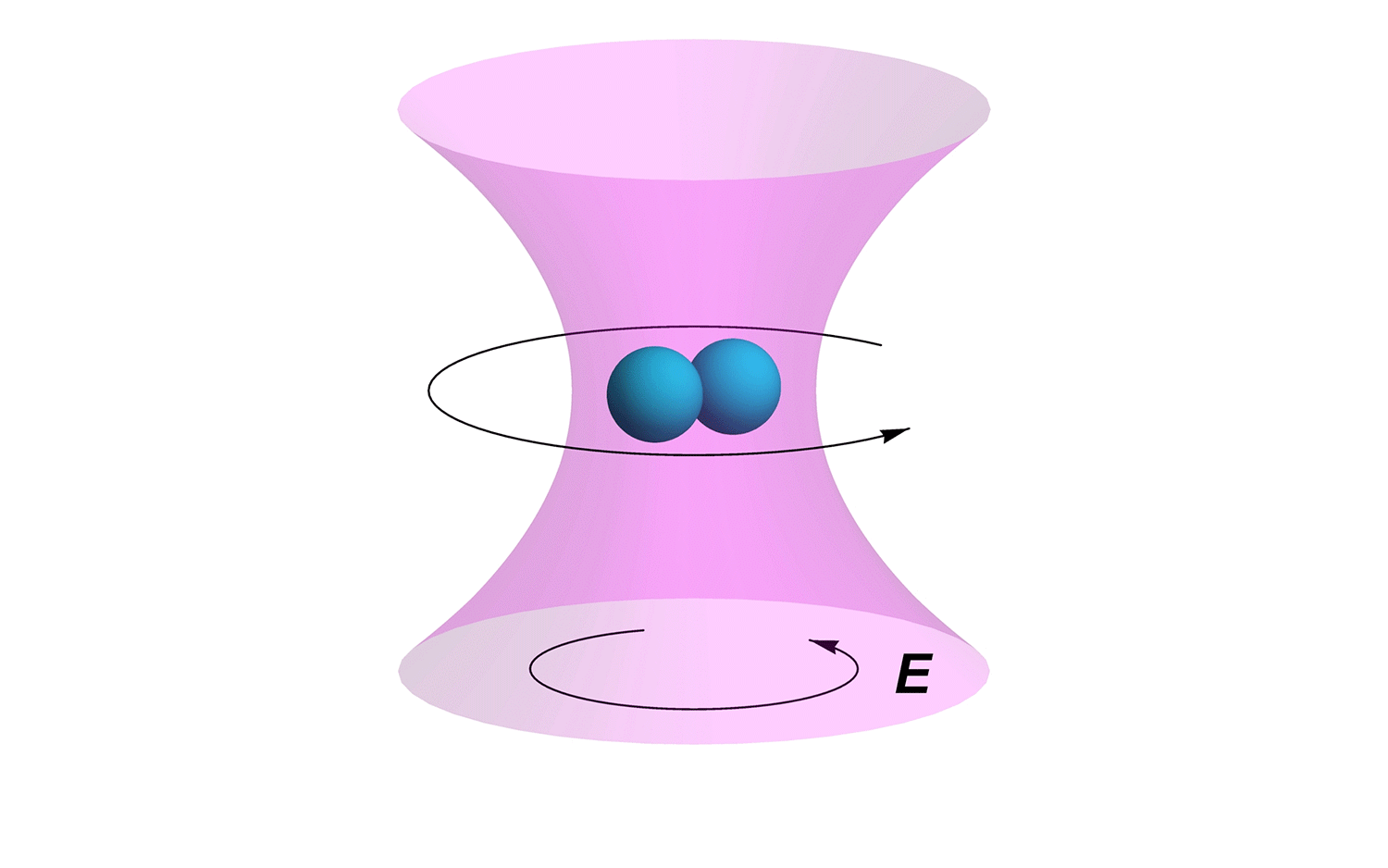What in the Whirled? Tiny, Floating Dumbbell Rotates 60 Billion Times Per Minute

Spinning objects are hypnotic and fascinating, as last year's fidget-spinner craze overwhelmingly demonstrated. But even the fastest fidget spinner trails the new reigning champion of fast-whirling objects: a tiny dumbbell that can rotate 60 billion times per minute.
It's enough to make your head spin.
Spin doctors — er, researchers — recently created the nanoscale rotor and levitated it in a vacuum, blasting it with lasers to set it spinning. Their research, described in a new study, could help reveal how different substances respond under extreme conditions and how friction behaves in a vacuum, Tongcang Li, an assistant professor of physics and astronomy, as well as electrical and computer engineering, at Purdue University, said in a statement. [The 18 Biggest Unsolved Mysteries in Physics]
Over the past decade, researchers have tested the limits — and broken records — for how fast human-made things can spin. In 2008, a motor the size of a matchbook clocked 1 million rotations per minute, Live Science previously reported. Then, in 2010, scientists set a new rotation record when they spun a slice of graphene at a dizzying 60 million spins per minute, Popular Science reported that year.
Three years later, that record was shattered by a microscopic sphere measuring just 4 micrometers — one-tenth the width of a human hair — capable of completing 600 million spins per minute, or about 500,000 times faster than the spin cycle in a washing machine.
For the new study, the scientists tested so-called nanodumbbells made from two joined silica spheres; each dumbbell measured about 0.000012 inches (320 nanometers) long and approximately 0.000007 inches wide (170 nm).

Tightly focused laser light can manipulate tiny objects, and the researchers tested their dumbbells by bombarding them with circularly polarized light, which happens when the electric field produced by the light has a constant magnitude but its direction rotates over time. That polarized laser light forced the nanoscale rotors to spin. In the absence of stray air molecules to slow it down — the test was carried out in a vacuum — the tiny spinner was able to achieve rotation speeds of 60 billion rotations per minute, which vastly exceeds what was previously possible, the scientists reported.
Sign up for the Live Science daily newsletter now
Get the world’s most fascinating discoveries delivered straight to your inbox.
The researchers were also able to vibrate the nanodumbbell in place by blasting it with a laser that was linearly polarized, with its light confined to a single plane, they wrote in the study.
Observations of the objects' rotation and vibration shed light on how vacuums work, the scientists explained. People generally think of vacuums as empty, but physicists see a vacuum as occupied by lively virtual particles, Li said in the statement, and this research with levitating, spinning nanodumbbells brings researchers one step closer to figuring out "what's really going on there" on a quantum level, Li said.
The findings were published online July 20 in the journal Physical Review Letters.
Original article on Live Science.

Mindy Weisberger is an editor at Scholastic and a former Live Science channel editor and senior writer. She has reported on general science, covering climate change, paleontology, biology and space. Mindy studied film at Columbia University; prior to Live Science she produced, wrote and directed media for the American Museum of Natural History in New York City. Her videos about dinosaurs, astrophysics, biodiversity and evolution appear in museums and science centers worldwide, earning awards such as the CINE Golden Eagle and the Communicator Award of Excellence. Her writing has also appeared in Scientific American, The Washington Post and How It Works Magazine. Her book "Rise of the Zombie Bugs: The Surprising Science of Parasitic Mind Control" will be published in spring 2025 by Johns Hopkins University Press.









